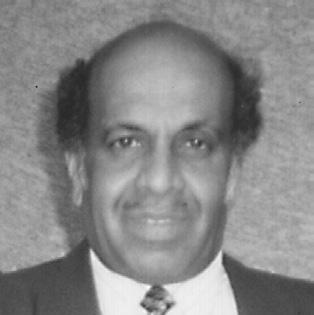
3 minute read
A life in exile
from 2009-10 Sydney (2)
by Indian Link
NOEL G DE SOUZA comments on the life of migrants who, continents away from their homelands, recreate their familiar pasts in Australia
Diwali, a time for a new beginning, commemorates the return of Rama and Sita from exile as was told in Valmiki’s stupendous Sanskrit poem (24,000 verses) the Ramayana. Many of us migrants have, to a lesser or greater extent, a feeling of being in exile; it represents a pain of separation from the familiar (family, friends and landscape) of the old homeland to the unknown of the new country. This can lead to nostalgia and ultimately to melancholy, which the poet Keats characterised as “an anguish of the soul.” to take whatever jobs were offered to them. They also longed for their old homelands and brought the flavour of their foods and their architecture to Australia. They brought multiculturalism, albeit European, to Australia. Some groups tried to recreate their festivals here like the Italians in Leichhardt and the Greeks in Newtown; the Germans celebrate Oktoberfest. Germans and Italians contributed to the establishment of the wine industry (such as the Italian de Bortoli family). groups tried to recreate their festivals here like the Italians in Leichhardt and the Greeks in Newtown; the Germans celebrate Oktoberfest
Rama and Sita suffered that pain of separation from Ayodhya, and later the anguish of separation from each other. Rama had done no wrong. His father King Dasaratha had generously but naively given two boons to his third wife Kaikeyi, who had made two demands: the first was that the king’s heir Rama be banished to a forest to live as a hermit for fourteen years and, second, that her own son Bharata be enthroned instead.
Some
Rama had done no wrong, but accepted his father’s decision. Rama wanted Sita to continue within the safety of Ayodhya but she refused, and decided on a life of banishing herself to a forest with its hazards and its loneliness. The major part of the Ramayana deals with the story of this exile.
The feeling of exile and deprivation would have been particularly strong for the convicts from Britain and Ireland who were forced away from their families, friends and homes and transported, often for life, to distant Australia, then a forbidding land with strange animals, plants and people. Some of those sent here were young children who had committed petty crimes or even no crimes, but were found guilty by harsh courts. Sent in chains and then subjected to discipline by the whip aptly summarises their sad situation. Their longing for their old homeland was so strong that they contributed to replicating its character as much as possible within the new landscape.
There were volunteer migrants who came after the convicts such as during the gold rushes. Lured by stories of rich pickings or grants of rich cultivable lands, they were mostly to eventually experience disappointment, but they contributed to building a new and modern Australia, which was British in character.
After World War II there was a rush of European migrants to Australia. Fleeing Europe which had been beset by wars, they came with hope to a distant land. They were also to feel the sense of exile. Many of them were non-English speaking and had
Some East European migrants who were virtually refugees, such as Sidney Myer, Victor Smorgon, Sir Arvi Parbo and Frank Lowy, stand out as significant entrepreneurs who overcame major hurdles to set up businesses in Australia. The next migration wave came from Asia. Some came dramatically as “boat-people” from Vietnam venturing through perilous seas risking hazardous weather and pirates, to their selfimposed exile. They extended the meaning of multicultural to include Asian cultures.
In comparison to the earlier waves of migrants, Indians have not been as disadvantaged. They have come to an already developed Australia. They are Englishlanguage educated and many have useable tertiary qualifications. However, despite new telecommunications and cheap air travel, many still feel the sense of exile. This may be somewhat alleviated by associating with their ethnic groups which recreate their festivals such as Diwali.

Migrants from around the world who pine for their old countries and cultures need to put such longings behind them and rather work to establish themselves in their new country. Their Australian grown children cannot be expected to have a similar sort of attachment to the old countries because they do not have a feeling of living in exile; Australia is their home as the descendants of the convicts have shown. Migrants may be bewildered seeing their children grow up in an unfamiliar environment of social freedom and individual independence.
When in exile, despite trials and tribulations, both Rama and Sita adhered to their high principles. Rama had honed his skills during his exile and this prepared him to take up his reign as a just ruler in Ayodhya. They returned triumphantly to their rightful destiny in Ayodhya. Most migrants, in contrast, are here to stay on a permanent basis. Every migrant needs to banish any feelings of being in exile from within themselves.










